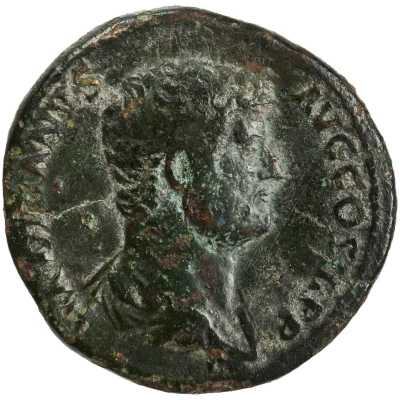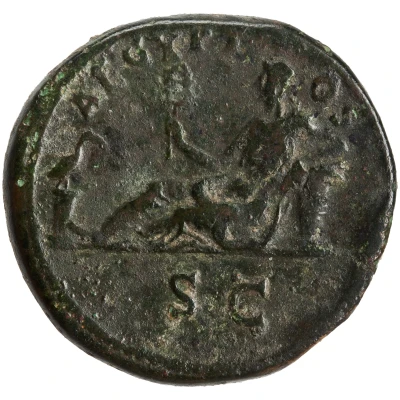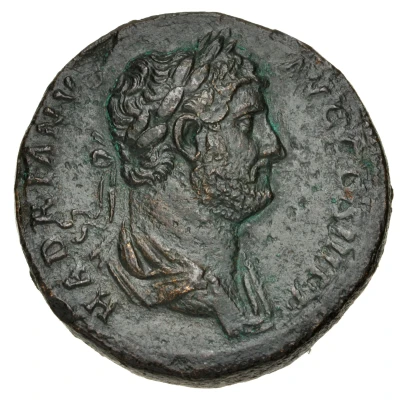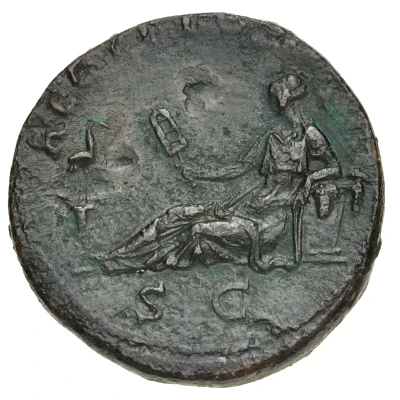


© American Numismatic Society (ANS)
Sestertius - Hadrian AEGYPTOS S C; Egypt
| Orichalcum | 25 g | 32.5 mm |
| Issuer | Rome › Roman Empire (27 BC - 395 AD) |
|---|---|
| Emperor | Hadrian (Publius Aelius Hadrianus) (117-138) |
| Type | Standard circulation coin |
| Years | 130-133 |
| Value | 1 Sestertius = ¼ Denarius |
| Currency | Denarius, Reform of Augustus (27 BC – AD 215) |
| Composition | Orichalcum |
| Weight | 25 g |
| Diameter | 32.5 mm |
| Shape | Round (irregular) |
| Technique | Hammered |
| Demonetized | Yes |
| Updated | 2024-10-06 |
| Numista | N#256078 |
|---|---|
| Rarity index | 97% |
Reverse
Aegyptos reclining left, holding sistrum and resting on fruit basket; to left, ibis, usually on a low column.
Script: Latin
Lettering:
AEGYPTOS
S C
Translation:
Aegyptos. Senatus Consultum.
Egypt. Decree of the senate.
Comment
Source: Online Coins of the Roman Empire (OCRE)Interesting fact
One interesting fact about this coin is that the metal used to make it, orichalcum, is a mysterious and rare alloy that was highly valued in ancient times. It is believed to be a combination of gold, silver, and other metals, but the exact composition is unknown. The use of orichalcum in this coin suggests that it was a high-value coin, possibly used for special purposes or as a symbol of wealth and power.

